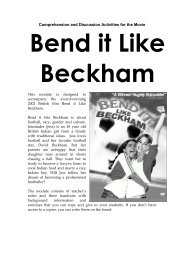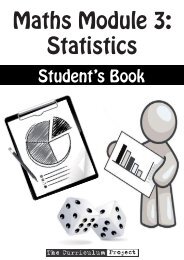Download - The Curriculum Project
Download - The Curriculum Project
Download - The Curriculum Project
You also want an ePaper? Increase the reach of your titles
YUMPU automatically turns print PDFs into web optimized ePapers that Google loves.
3.3 Living in different climatesA. Introduce the activity: explain that students will listen to a man talking about living in Kuwait, and awoman talking about living in north-west Russia. Students identify these place on a world map. Ask ifstudents know anything about the climates of Kuwait or Russia.Pre-teach heat (noun), pleasant, minus 25 degrees, layer, stove, damp, air conditioning.Individually or in pairs, students predict the answers to the questions.B. Play audio 11.4 two or three times.Students answer the questions – some questions are not answered.Answers:1. Yes, it is. 10. Minus 25 to minus 30 degrees Celsius.2. July and August. 11. No answer – she doesn’t say.3. No answer – he doesn’t say. 12. <strong>The</strong>y use traditional stoves in the countryside,4. No, it’s a dry heat. and special heating systems in the cities.5. No answer – he doesn’t say. 13. Layers of warm clothes.6. Yes, they do. 14. Yes, it is.7. No – cars have air-con. 15. Yes, it does.8. Yes – the air-con inside is quite cold. 16. No answer – she doesn’t say.9. No – it’s often too hot.C. Do this as either a speaking or writing exercise. Students describe their own climates, using theaudioscript as a model.4. Agreeing and DisagreeingThis section looks at the functions of agreeing and disagreeing. It introduces phrases with so and not, andprovides practice in expressing opinions and giving supporting information to back them up. <strong>The</strong>re is anextended reading, listening and speaking task about the internet.4.1 so and notA. Pre-teach cut (v) (to reduce), rumour. Establish the situation: Ma Khin and Si Si are discussingan upcoming meeting of their organisation. (<strong>The</strong> Student Development League is not a realorganisation.) Students read the conversation, and identify what the meeting is about.Answer: <strong>The</strong> budget.B. Students answer the questions. <strong>The</strong> answers to these questions are not exact yes or no answers.I think so means probably, and I don’t think so means probably not.Answers:1. Probably. ‘I think so’ means ‘probably yes’.2. Yes. ‘I hope so’ means she wants to attend.3. Probably not. ‘I don’t think so’ means ‘probably no’.4. We don’t know, but Si Si hopes it is correct.Tell students to read the I think so, I hope not, etc. section of the Language Reference.C. Read the explanations. Students answer the questions using I think or I hope + so or not.<strong>The</strong> answers depend on each student’s situation and opinions.Module 1147



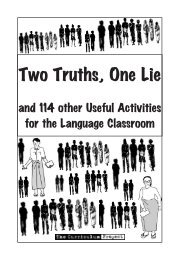
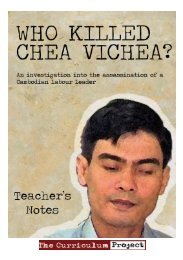

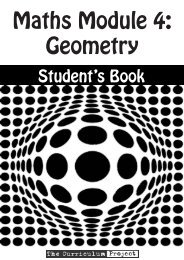

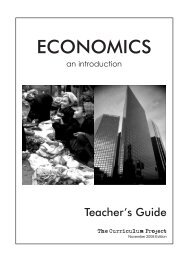
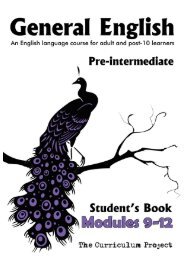

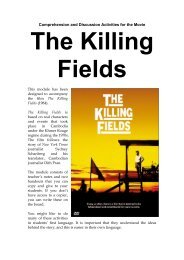
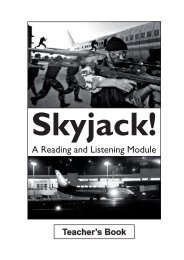
![[Eng] Nov 2012 DRAFT - The Curriculum Project](https://img.yumpu.com/45590859/1/184x260/eng-nov-2012-draft-the-curriculum-project.jpg?quality=85)
